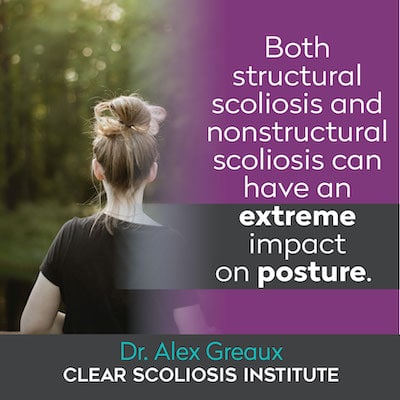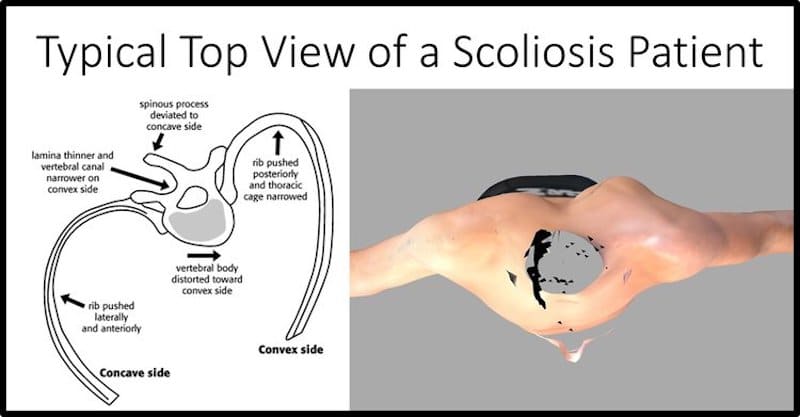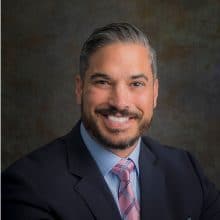
Generally speaking, there are two categories of scoliosis - structural scoliosis and nonstructural scoliosis, often known as functional scoliosis, which is actually more of a posture problem or muscle imbalance rather than a true scoliosis. A true structural scoliosis involves spinal rotation in addition to a side-to-side curve of the spine of 10 degrees or more. By definition, nonstructural scoliosis isn’t truly a scoliosis because it does not include rotation of the spine, and it appears to go away when the body is in various positions.
Throughout this article, we’ll discuss the difference between structural scoliosis and functional scoliosis, how to tell the difference between the two, and common methods of treatment for each.
The main difference between structural scoliosis and nonstructural scoliosis is whether or not there is rotation of the spine. In other words, nonstructural scoliosis is when the spine appears to be curved, but this curve is most often due to postural problems or irregularities elsewhere in the body. [1]
According to SPINE-Health, “If a person with nonstructural scoliosis were to bend forward or lay down, the scoliosis curve would likely go away while held in that position.” [2] When doctors see this happen, it is a strong indication that the individual does not have a true scoliosis with rotation of the spine, but rather that their scoliosis is functional and related to posture or something else going on within the body.
Functional scoliosis is most often classified as compensatory, postural, or transient. Compensatory classification is when the body is compensating for something else going on, such as a difference in leg length or an unlevel pelvis.
Postural classification is due to poor posture from bad habits or muscle imbalance. Posture related curves are often the easiest to correct. By correcting the muscle imbalance associated with a posture related curve, you can typically get full resolution to this form of functional scoliosis.
Transient functional scoliosis is typically a temporary response to pain in the body, most often caused by a herniated disc. An individual may completely change their posture based on the pain they are experiencing, which could cause a curve without rotation in their spine.
Scoliosis is classified as mild, moderate, or severe. This classification is based on the degree of curvature present in the Cobb Angle.
Most individuals are diagnosed with scoliosis when they are in the moderate stage, with a curve between 25 and 40 degrees. Once a curve has reached this degree, it is much easier to spot posture changes with the naked eye, which is likely why most individuals are diagnosed with scoliosis at this stage. 
Both structural scoliosis and nonstructural scoliosis can have an extreme impact on posture.
Because scoliosis can affect posture in many different ways, for an untrained eye, it can be difficult to tell the difference between a true structural scoliosis and something that is more of a functional scoliosis or posture related problem.
One simple way professionals determine if a curve is a true scoliosis or a posture problem is to have the patient lie down. If the curve is still present when the individual is lying down, it is likely a true scoliosis and not a functional scoliosis or a posture related curve.
Rotation of the spine is what makes structural scoliosis complex, because it is a 3-dimensional condition rather than a 2-dimensional condition. When a patient’s spine rotates, specifically their thoracic spine, their torso and ribs can also rotate, causing a concave side and a convex side.
This rib deformity is frequently seen in thoracic scoliosis. A rib and/or shoulder blade sticking out more on one side versus the other is extremely common with a thoracic curvature.

Lumbar scoliosis often goes unnoticed because it does not involve the ribs and can, therefore, be difficult to spot since a prominent rib or shoulder blade is not involved.
Depending on the severity level of scoliosis, traditional treatment recommendations often include watch-and-wait, traditional bracing, or invasive scoliosis surgery. With cases of thoracic scoliosis, traditional bracing can often increase the deformity instead of decreasing it. A good alternative to traditional bracing is a 3-D corrective brace, such as the ScoliBrace. Some CLEAR Scoliosis Centers use this as a compliment to the CLEAR approach.
The alternative approach practiced by CLEAR-certified doctors is a noninvasive approach that combines in-office chiropractic care, passive rehabilitation, active rehabilitation, and a custom prescribed home exercise program unique to each patient’s individual case. This approach is effective for both structural and nonstructural scoliosis.
Since nonstructural scoliosis is typically related to posture issues or muscle imbalance, a complete resolution is often possible with this type of curve. The CLEAR Scoliosis-Specific Exercise Program plays a huge role in correcting posture related scoliosis by addressing underlying posture problems or muscle imbalance.
Sensorimotor re-integration strategies involve balance training and postural remodeling. These strategies combined with other modalities within the CLEAR approach can also help correct posture related curves.
CLEAR treatment for structural scoliosis includes advanced chiropractic adjustments, a comprehensive soft tissue rehab component, sensorimotor re-integration strategies (balance training and postural re-modeling), and whole-body vibration therapy.
Our evidence-based approach is used by CLEAR-certified doctors around the world. In our study of 189 scoliosis patients over 3198 visits, over 95% of patients reported positive results following the CLEAR method. [4]
Before developing a custom treatment plan, a CLEAR-certified doctor will complete a thorough assessment, exam, and scoliosis x-ray series (if necessary) to determine the severity of the scoliosis and any potential complicating factors.
Once the doctor has all of the information they need, they will recommend a treatment plan based on their findings. Depending on the severity of scoliosis and the level of certification a doctor has received, they may recommend a Standard Care Treatment Plan or an Intensive Care Treatment Plan.
While all treatment plans are unique based on the patient’s case, the doctor's training, and the doctor’s recommendations, Standard Care Treatment Plans are most often recommended for local patients with mild or moderate scoliosis.
Structural scoliosis involves rotation of the spine, which is what makes it a true scoliosis. Nonstructural scoliosis involves only a lateral curvature of the spine; it doesn’t involve rotation.
If you see a scoliosis where the person lies down and the curve goes away, that is typically defined as a nonstructural or postural scoliosis where it is due to muscle spasm or a postural problem.
While watching-and-waiting, traditional bracing, or invasive surgery are the typical traditional approaches to treating structural scoliosis, the CLEAR approach is a noninvasive alternative to treat scoliosis. It involves a Scoliosis-Specific Exercise Program that is customized for each patient based on their case. This exercise program is beneficial for individuals with structural scoliosis and nonstructural scoliosis, which isn’t a true scoliosis at all.
The CLEAR approach to treating scoliosis has been highly successful, with 95% of patients reporting positive results. If you have received a recent scoliosis diagnosis and would like to explore alternative treatment options, CLEAR Scoliosis Institute is a great place to start.
[1] Functional vs Structural Scoliosis: What's the Difference?

CLEAR provides a unique and innovative way of understanding scoliosis. Sign up to receive facts and information you won’t find anywhere else.
